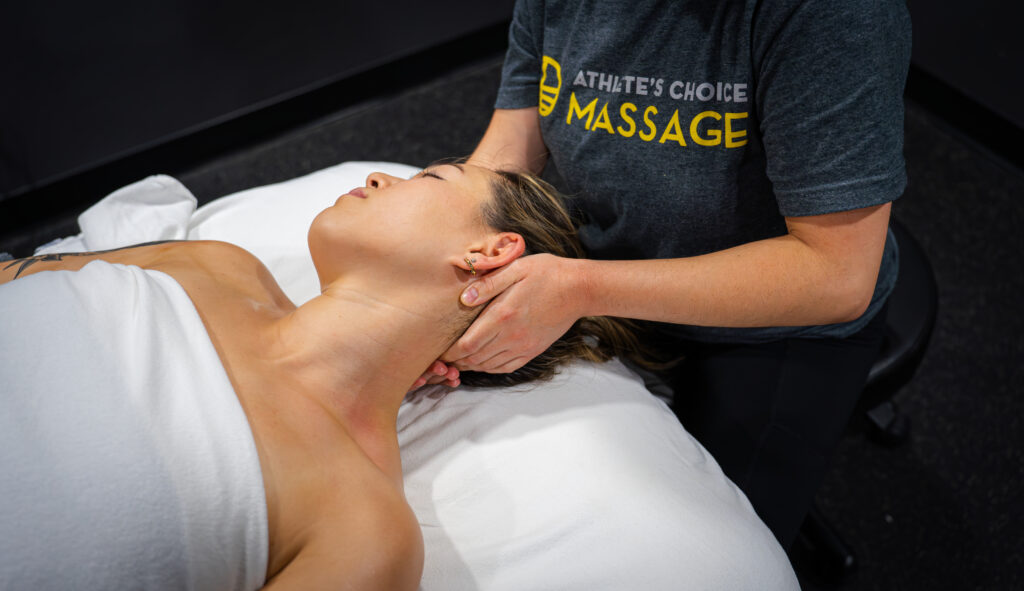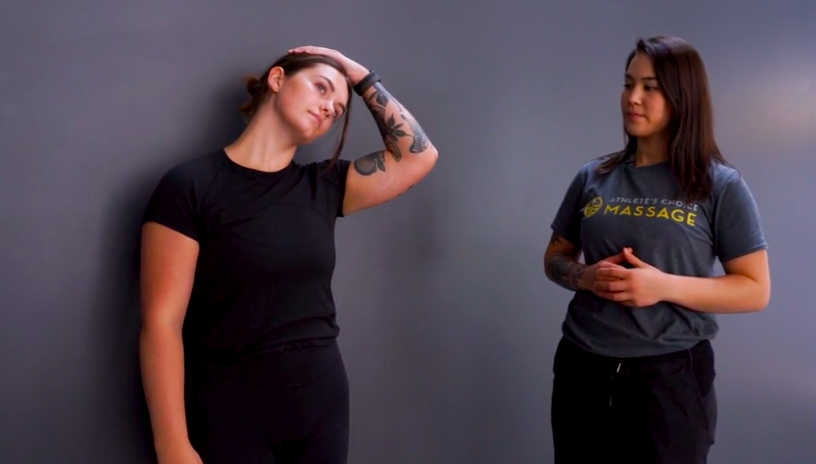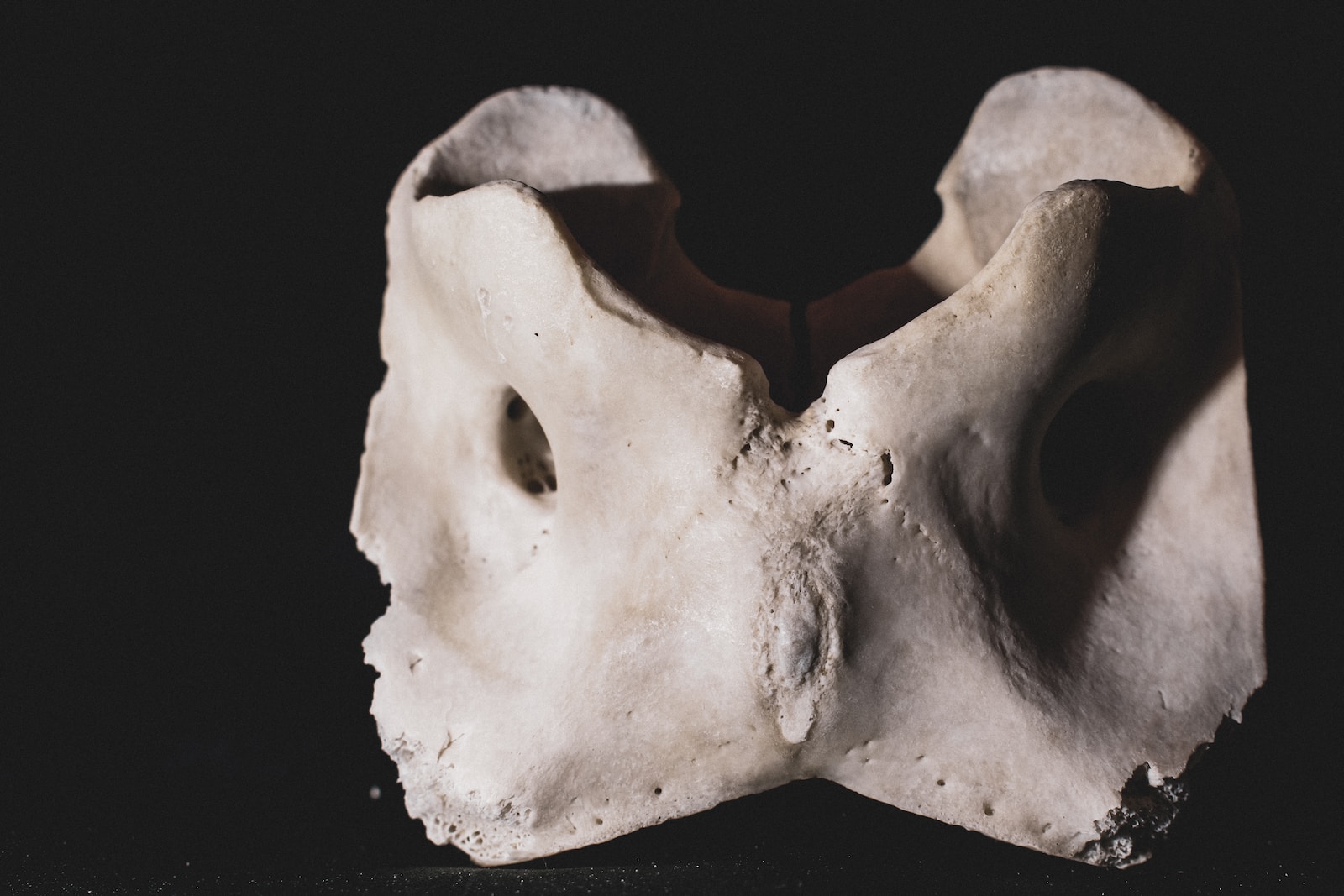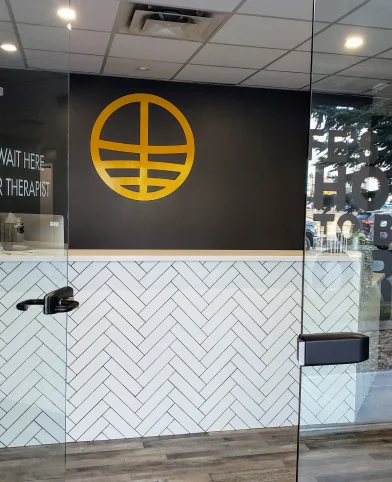Did you know that neck pain affects nearly 50% of adults each year? If you’re an active individual in Edmonton or Sherwood Park, you might be no stranger to sternocleidomastoid muscle pain, especially if you engage in sports, weightlifting, or even prolonged desk work. The sternocleidomastoid muscle (SCM) is crucial for head and neck movement, but it’s also prone to strain, leading to discomfort and headaches.
This article will explain the role of the sternocleidomastoid muscle, explore common causes of sternocleidomastoid strain, and provide tips on how to treat and prevent pain through stretching, strengthening, and rehabilitation.
What is the Sternocleidomastoid Muscle?
The sternocleidomastoid muscle is a long muscle that runs along both sides of your neck, connecting your skull to your collarbone and sternum. It’s responsible for several key movements, including:
- Rotating the head from side to side
- Tilting the head forward and backward
- Raising the head when you’re lying down
It’s also involved in breathing by helping to elevate the rib cage, making it essential not only for movement but also for respiration.

Common Causes of Sternocleidomastoid Muscle Pain
Active individuals are especially prone to sternocleidomastoid muscle pain, as repetitive movements, poor posture, or sudden impact can easily lead to strain. Here are the most common issues that can arise:
Sternocleidomastoid Muscle Strain
Overstretching or overuse of the SCM muscle can result in a sternocleidomastoid strain, which causes sharp or persistent neck pain. This is common after activities like lifting heavy weights without proper form or enduring sudden jerking motions in sports.
Muscle Tension and Spasms
Stress, poor posture, or fatigue can lead to involuntary muscle contractions in the SCM, causing discomfort and restricting your range of motion.
Tension Headaches
The SCM muscle is often a source of tension headaches, as tightness in the neck can radiate pain to the head. You might feel a dull, pressure-like pain across the forehead and temples.
Neck and Shoulder Pain
Because of the SCM’s connection to the collarbone and sternum, a tight or strained muscle can cause pain not only in the neck but also in the upper back and shoulders.
Effective Stretches for Sternocleidomastoid Muscle Relief
Stretching is one of the best ways to relieve tension in the sternocleidomastoid muscle. Here are a few easy stretches to incorporate into your routine:
1. Neck Tilt Stretch
Sit or stand upright. Slowly tilt your head toward one shoulder, bringing your ear close to your shoulder while keeping the opposite shoulder down. Hold for 20-30 seconds and switch sides.
2. Neck Rotation Stretch
Gently turn your head to one side until your chin is in line with your shoulder. Hold this position for 20-30 seconds, then rotate to the opposite side.
3. Neck Extension Stretch
Sit or stand tall and gently tilt your head backward, looking up toward the ceiling. Hold for 20-30 seconds, then return to neutral.
4. Neck and Shoulder Roll
With your shoulders relaxed, slowly roll them in a circular motion forward, then backward. This helps release tension in both the SCM and upper back muscles.
Remember to perform each stretch slowly and without forcing your neck into any uncomfortable positions.

Strengthening the Sternocleidomastoid Muscle to Prevent Strain
Preventing sternocleidomastoid strain requires strengthening the muscles that support your neck and shoulders. Here are a few exercises to help:
- Neck Extensions: Sit upright and gently push your head back against your hands, creating resistance.
- Lateral Flexion: Place one hand on the side of your head and push against it while maintaining a neutral neck position.
- Isometric Neck Exercises: These involve holding your head in a neutral position while applying resistance with your hands.
Strengthening your SCM muscle, along with regular therapeutic massage, can reduce the likelihood of future neck pain.
How to Rehabilitate a Sternocleidomastoid Muscle Injury
If you’re dealing with a sternocleidomastoid strain, a proper rehabilitation plan can help you recover effectively:
- Rest and Ice: Apply ice for 15-20 minutes to reduce inflammation if the injury is fresh.
- Stretch Gently: Use the stretches mentioned above to maintain mobility without overstressing the muscle.
- Strengthening Exercises: Gradually incorporate light resistance exercises to rebuild strength once the pain subsides.
- Massage Therapy: Consider booking a deep tissue massage at Athlete’s Choice Massage to release tension and aid recovery.
You may also benefit from manual osteopathy, a gentle hands-on therapy, which focuses on aligning the body’s structures for improved mobility.
Keep Your Neck Strong and Healthy
Maintaining a healthy sternocleidomastoid muscle is crucial for active individuals in Edmonton and Sherwood Park who rely on a full range of motion in their daily activities. By incorporating proper stretches, strengthening exercises, and seeking regular massage therapy, you can prevent sternocleidomastoid muscle pain and stay on top of your game. If you’re already experiencing discomfort, consider visiting Athlete’s Choice Massage Sherwood Park for personalized care and recovery.
You might also like: Understanding and Relieving Collarbone Pain in Active Women






